Go ahead, play mahjong. Stuff yourself on holiday food. Mingle with crowds of Chinese tourists at popular destinations such as Sun Moon Lake (日月潭). But if none of the usual Lunar New Year activities above hit the spot, a visit to Taiwanese Aboriginal tribes can offer a refreshing experience filled with natural beauty and cultural diversity. Read on for an introduction to several Aboriginal hamlets selected by the Taipei Times, and stay tuned for more destinations next Saturday.
Lalashan (拉拉山)
Nestled in Taoyuan County’s (桃園縣) Lalashan, the Atayal (泰雅) village of Baling (巴陵) is especially popular during the summer months of May and June, when succulent peaches lure visitors to the mountain tribe at an elevation of some 1,200m.
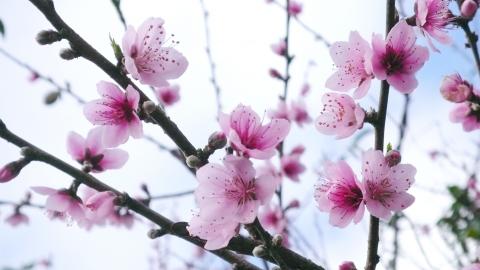
Photo: Ho Yi, Taipei Times
Qara (卡拉), a neighboring Atayal hamlet of about 20 households, is a much less-visited spot — making it a better choice for those seeking peace and seclusion. Visitors can go on a hike along the historical Kaya trail, which used to be the village’s only connection to the outside world. Along the way, pristine forest surrounds Qara Stream (卡拉溪), which teems with trout, and an ark-shaped Christian church delights guests with its unique architecture.
A jaunt to Baling and Qara would not be complete without a visit to the well-known grove of majestic Formosan cypresses known as shengmu (神木), or divine tree, at the Lalashan Forest Reserve (拉拉山自然保護區). The area is home to about 120 trees estimated to be more than 500 years old, with one tree about 2,800 years old. A 3.7km trail winds through the 22 giant cypresses marked out for public viewing.
Within the shengmu grove, aspiring hikers will find the entrance to the Bafu Ancient Trail (巴福越嶺古道). The 17km mountain path used to be the route Atayal tribespeople took when traveling between settlements in Baling and Fushan (福山), Wulai (烏來). The six-hour trek from Taoyuan to Taipei may be exhausting, but relaxing in a Wulai hot spring at the end of the day makes it all worthwhile.
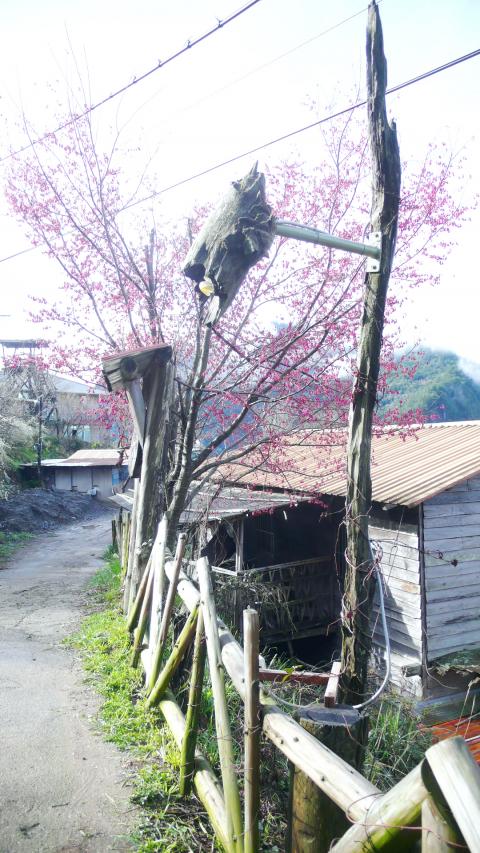
Photo: Ho Yi, Taipei Times
For the daring, bungee jumping off the Dahan Bridge (大漢橋) over Dahan River (大漢溪) is among the favorite outdoor activities on the Northern Cross-Island Highway (北橫公路), which leads to Lalashan. Jumping sessions are organized on a weekly basis. Visit www.bungy.com.tw for details. Meanwhile, the Sinsing hot spring (新興溫泉), also known as the Galahe (嘎拉賀) hot spring, is one of the Atayal territory’s best kept secrets. Getting to the secluded natural spring requires a 40 minute expedition involving mountain hiking and river tracing from Sinsing, or Galahe, village, located 11km from Baling.
HOW TO GET THERE
■ Lalashan is located on Route Seven (台七線) between Taoyuan and Yilan (宜蘭) and easily accessible by car. Able cyclists can reach the 2,000m mountain through the picturesque Northern Cross-Island Highway, which is part of Route Seven.
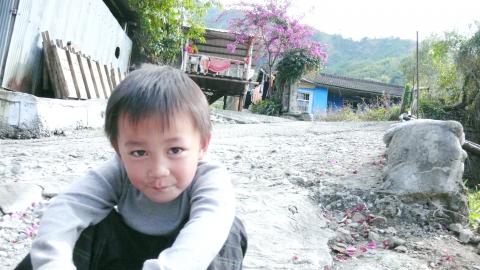
Photo: Ho Yi, Taipei Times
WHERE TO STAY
■ While Baling has no shortage of lodging (take a look at tourism Web site lala3.emmm.tw for a taste of what’s on offer), Qara has a more modest, but decent selection of bed and breakfasts including Bafu Farm House (八福農園, tel: (03) 391-2013) and Fu-yam Tourist Home (福緣山莊, www.fu-yam.com). Many guesthouses have orchards and homesteads so visitors can sample homegrown fruits and vegetables such as peaches, persimmons and mushrooms, or take them home for souvenirs.
Smangus (司馬庫斯)
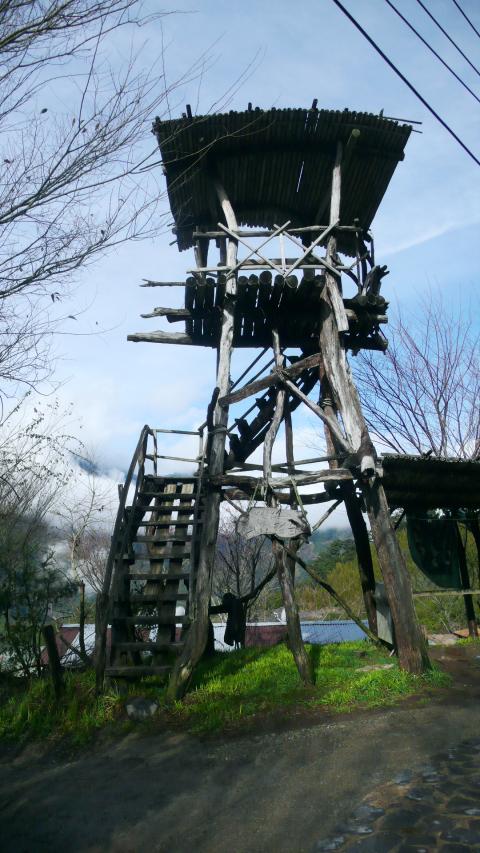
Photo: Ho Yi, Taipei Times
Before the completion in 1995 of the first and so far the only semi-paved road into the village, the Atayal (泰雅) tribe of Smangus spent decades in isolation deep in the lush mountains of Hsinchu County (新竹縣). Times have changed, and now tour buses often pull up outside the village entrance carrying city dwellers in search of fresh air and the noted grove of ancient Formosan cypresses, located some 5km away.
Fortunately, the peace and quiet of the misty mountain retreat is rarely undermined by the influx of tourists. Visitors can appreciate the pristine beauty of Smangus by taking a hike along the mountain trail to the grove of cypress giants, which are up to 2,500 years old. Flanked by maples and wax trees that flush the quiet forest with their blazing red leaves during autumn months, Silbu Trail (司立富觀瀑步道) leads trekkers to the imposing Silbu waterfall, surrounded by the Taiwan red pine woods. An easy 40-minute hike from the village will take visitors to Koraw park, a traditional millet farmland for the Atayal settlement.
With a long tradition of communalism, villagers in Smangus launched a collective development plan in 2004 under which all village assets are communally operated and owned. Visitors can only book guesthouses through the collective and dine at the village’s communal kitchen. The practice has been carried out to good effect, as the remote hamlet is pleasantly outfitted with the modern conveniences of a tourist spot — the tiny community even has a neatly decorated coffee shop with a specialty brew of coffee spiced with makao (馬告), meaning mountain pepper in the Atayal language.

Photo: Ho Yi, Taipei Times
For tourist information, contact the tribe at 0928-804-983 or (03) 584-7688, or visit their Web site at www.smangus.org, which contains detailed information regarding how to get there and where to sleep.
One hour’s drive from Smangus across the gorge of Takechin Creek (塔克金溪), the Atayal communities of Singuang (新光) and Cinsbu (鎮西堡) are also worth a visit. Though less developed and tourist-friendly than Smangus, the two neighboring hamlets offer a haven of tranquility with a splendid view of the mountains, sunrise and starry nights. (In Atayal languages, cinsbu means a place where the first ray of sunlight is seen and the soil is fertile). Hikers can choose from several trails that run deep into the Dabajianshan (大霸尖山) area or trek to a grove of cypresses near Cinsbu that is less accessible than the one in Smangus. A further adventure into the woods leads to a mountain lake known as Dulongtan (毒龍潭) at an elevation of some 2,300m. Prepare for a long, nine-hour roundtrip hike in the pristine forest to reach the lake, which is said to be shrouded in mist all year around.
A word of warning: The mountain trail to the grove near Cinsbu can be perilous in bad weather. Also, potential travelers should watch the weather forecast when planning trips to Smangus, as the one-lane road to the village is prone to mudslides during heavy rain.
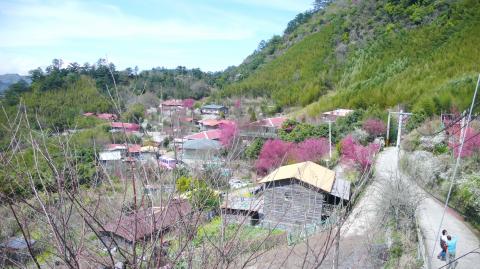
Photo: Ho Yi, Taipei Times
WHERE TO STAY IN SINGUANG
■ Yaguw Art and House (雅屋民宿, www.tayal.com.tw)
■ Amui Bed and Breakfast (阿慕伊民宿, wetwetsoap324.myweb.hinet.net)
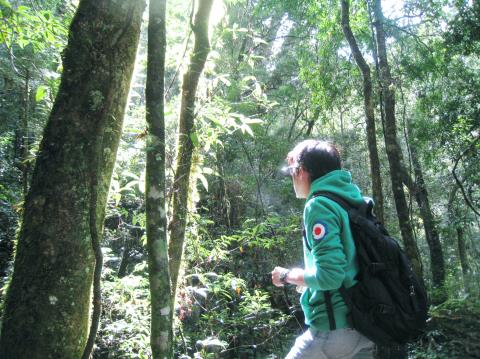
Photo: Ho Yi, Taipei Times
WHERE TO STAY IN CINSBU
■ Halusi Bed and Breakfast (哈路斯民宿, (03) 584-7770)
■ Pota Bed and Breakfast (波塔民宿, (03) 584-7791)
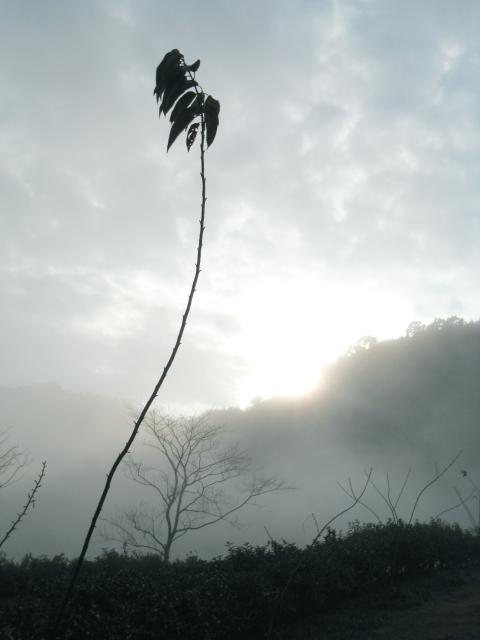
Photo: Ho Yi, Taipei Times
■ Bole House (伯樂崌, (03) 584-7741)
Yushan (玉山)
Legend has it that when the Bunun (布農) tribe of Luandashan (巒大山) set out to seek new habitation, a respected tribal elder asked them to “never leave sight of Tongku-Saveq.” Tongku-Saveq, meaning “mountain haven,” is the Bunun word for Yushan. The clan settled in present-day Wangsiang (望鄉) Village in Nantou County (南投縣). Northwest of Yushan and some 1,000m above sea level, the village is blessed with a panoramic view of the majestic topography surrounding the Bunun tribe’s sacred mountain.
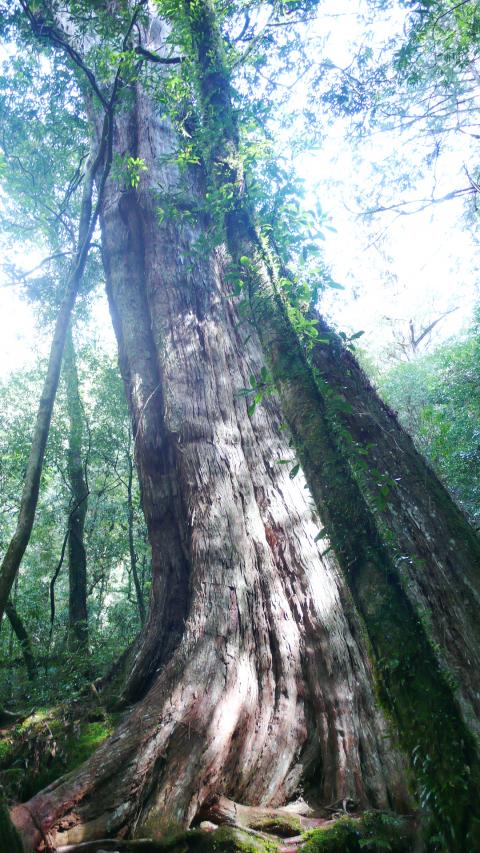
Photo: Ho Yi, Taipei Times
In Wangsiang, or Kalibuan as it is called by the Bunun Aborigines, tourism has been developed in tune with the indigenous culture and traditions. A four-hour trek along the Manyuduosih Trail (馬奴多斯獵人古道) gives hikers a taste of the traditions of the Bunun people, for whom Yushan has been their hunting ground for millennia. Large groups of visitors can reserve performances of Bunun’s world renowned Pasi But But (Praying for a Rich Millet Harvest, 祈禱小米豐收歌), sung in eight-part chords.
Hot-spring enthusiasts can pay a visit to the nearby Bunun tribe of Dongpu (東埔), who partially dwell in the Yushan National Park (玉山國家公園) and partially form the popular hot-spring town of Dongpu, where the spring water is 50°C on average and categorized as a high-quality carbon-acid hot spring, clear and odor-free.
Since Dongpu is situated on the doorstep to Yushan at the meeting point of Chenyoulan River (陳有蘭溪) and Shalisien Stream (沙里仙溪), it should come as no surprise that the village has been home to the country’s most distinguished high mountain guides. Both the Wangsiang and Dongpu communities offer jaunts and treks led by experienced guides into Yushan, Dabajianshan and Dasyueshan (大雪山).
A visit to the Batongguan Old Trail (八通關古道) is a must when traveling through the mountainous region. First built during the Qing Dynasty and then revamped under Japanese colonialist rule, the trail offers many natural wonders including Yunlong Waterfall (雲龍瀑布), Yinyu Waterfall (乙女瀑布), Father Son Cliff (父子斷崖) and misty high-altitude meadows.
For detailed information regarding how to get there and where to stay in Wangsiang, contact Wang Hsiang Bunun Holiday Village (望鄉布農渡假部落) at (049) 270-2681 or (049) 270-2170, or visit their Web site at www.yohani.org.tw.
WHERE TO STAY IN DONGPU
■ Hunt Cottage and Guesthouse (獵寮藝宿坊), located in Yushan National Park. Tel: 0928-011-729 and 0928-194-142.
■ Spring Source Bed and Breakfast (源頭溫泉民宿), tel: (049) 270-1841. Nestled on the highest point of the village, the location boasts natural hot spring water gushing from rock crevices.
INFORMATION
■ For those interested in learning more about Taiwan’s Aboriginal tribes, the following Web sites (all in Chinese) provide useful content regarding tribal history, culture, traditions and tourist information:
■ Taiwan’s Indigenous Peoples Portal (台灣原住民資訊資源網) at www.tipp.org.tw
■ Taiwan Aboriginal Tribe Sustainable Development Network (台灣原住民部落永續發展資訊網) at apc-tcc.atipc.org
■ Tribal E Paradise (部落e樂園) at www.e-tribe.org.tw

In the March 9 edition of the Taipei Times a piece by Ninon Godefroy ran with the headine “The quiet, gentle rhythm of Taiwan.” It started with the line “Taiwan is a small, humble place. There is no Eiffel Tower, no pyramids — no singular attraction that draws the world’s attention.” I laughed out loud at that. This was out of no disrespect for the author or the piece, which made some interesting analogies and good points about how both Din Tai Fung’s and Taiwan Semiconductor Manufacturing Co’s (TSMC, 台積電) meticulous attention to detail and quality are not quite up to

April 21 to April 27 Hsieh Er’s (謝娥) political fortunes were rising fast after she got out of jail and joined the Chinese Nationalist Party (KMT) in December 1945. Not only did she hold key positions in various committees, she was elected the only woman on the Taipei City Council and headed to Nanjing in 1946 as the sole Taiwanese female representative to the National Constituent Assembly. With the support of first lady Soong May-ling (宋美齡), she started the Taipei Women’s Association and Taiwan Provincial Women’s Association, where she

Chinese Nationalist Party (KMT) Chairman Eric Chu (朱立倫) hatched a bold plan to charge forward and seize the initiative when he held a protest in front of the Taipei City Prosecutors’ Office. Though risky, because illegal, its success would help tackle at least six problems facing both himself and the KMT. What he did not see coming was Taipei Mayor Chiang Wan-an (將萬安) tripping him up out of the gate. In spite of Chu being the most consequential and successful KMT chairman since the early 2010s — arguably saving the party from financial ruin and restoring its electoral viability —

It is one of the more remarkable facts of Taiwan history that it was never occupied or claimed by any of the numerous kingdoms of southern China — Han or otherwise — that lay just across the water from it. None of their brilliant ministers ever discovered that Taiwan was a “core interest” of the state whose annexation was “inevitable.” As Paul Kua notes in an excellent monograph laying out how the Portuguese gave Taiwan the name “Formosa,” the first Europeans to express an interest in occupying Taiwan were the Spanish. Tonio Andrade in his seminal work, How Taiwan Became Chinese,